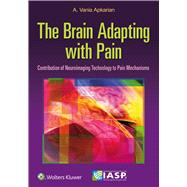The Brain Adapting with Pain Contribution of Neuroimaging Technology to Pain Mechanisms

The Brain Adapting with Pain Contribution of Neuroimaging Technology to Pain Mechanisms
- ISBN 13:
9781496317490
- ISBN 10:
1496317491
- Edition: 1st
- Format: Paperback
- Copyright: 08/07/2015
- Publisher: IASP
Rent
Sorry, this item is currently unavailable.
Note: Supplemental materials are not guaranteed with Rental or Used book purchases.
Extend or Purchase Your Rental at Any Time
Need to keep your rental past your due date? At any time before your due date you can extend or purchase your rental through your account.
Summary
Ideal for anyone with an interest in the increasing role of brain imaging in understanding pain perception and pain mechanisms, this unique, full-color IASP publication thoroughly covers technical advances in the field as well as potential new applications. Dozens of worldwide experts first demystify the technological concepts that are crucial for proper understanding and interpretation of neuroimaging findings, then explore new advances in understanding brain mechanisms of pain, in human as well as animal models.
Key Features
Key Features
- Covers key topics in the field, including the historical perspective, technology, animal pain neuroimaging, acute pain, neuroplasticity of chronic pain, chronic pain, pain modulation, ethical conflicts, and future directions
- Highlights strengths and weaknesses of specific neuroimaging techniques , and includes divergent views regarding outcomes and implications.
- Provides a short commentary from Dr. Apkarian, covering significant advances and unanswered questions.
- Ensures that both the experienced scientist and the general clinician will find the information they need to understand the current state of the field as well as potential future directions regarding the interaction between the brain and pain.
- Discusses both acute and various chronic pain conditions from a functional/physiological, structural/anatomical perspective, and evaluates the tools with which new therapies should be developed for properly treating and/or preventing pain states.






